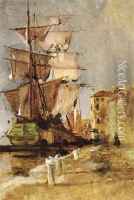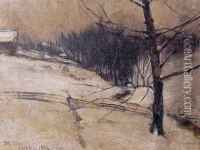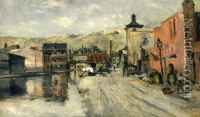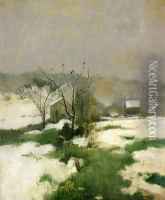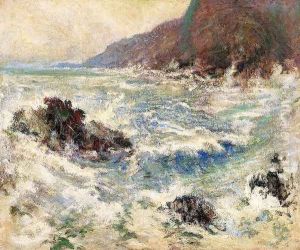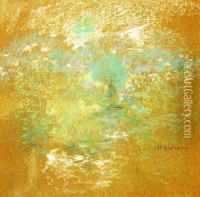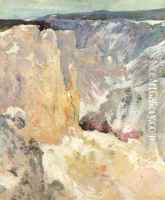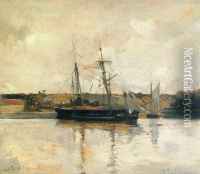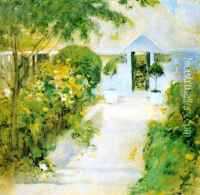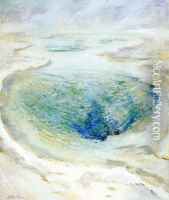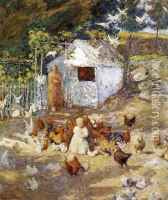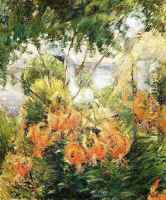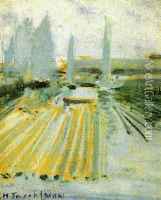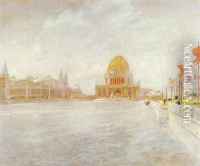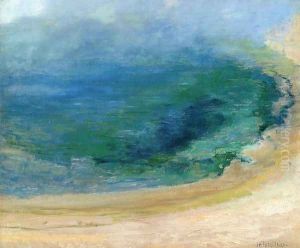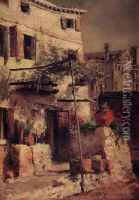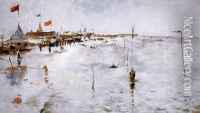John Henry Twachtman Paintings
John Henry Twachtman was an American painter best known for his impressionistic landscapes, though his style evolved significantly over the course of his career. Born in Cincinnati, Ohio, in 1853, Twachtman initially studied at the Royal Academy in Munich, Germany, where he was influenced by the dark, rich palettes and detailed realism characteristic of German academic painting. However, upon returning to the United States and later, through travels in Europe, particularly in France, Twachtman's style began to shift.
He became associated with the American Impressionist movement, developing a more atmospheric and less detailed approach to landscape painting. Twachtman's work during this period is characterized by a subtler palette and a focus on the effects of light and season on the landscape, often portraying the same scene under different conditions to capture its changing moods.
In the late 1880s and 1890s, Twachtman settled in Greenwich, Connecticut, where he produced some of his most celebrated works. His landscape paintings of this period show a remarkable synthesis of impressionist light and color with a more personal, introspective approach. Twachtman's property in Greenwich, with its gardens, brook, and waterfall, became the subject of many of his paintings, reflecting his deep connection to the land and his pursuit of a harmonious, integrated vision of nature.
Twachtman was a founding member of the Ten American Painters, a group that sought to break away from the academic traditions and promote a new, more individualistic approach to painting. Despite his critical success and influence among his peers, Twachtman struggled financially throughout his life. He died unexpectedly in 1902 at the age of 49.
His work, initially overlooked in the years following his death, has since been recognized for its significant contribution to American Impressionism and its unique blend of realism and impressionism, marked by a deeply personal and poetic approach to landscape painting.

